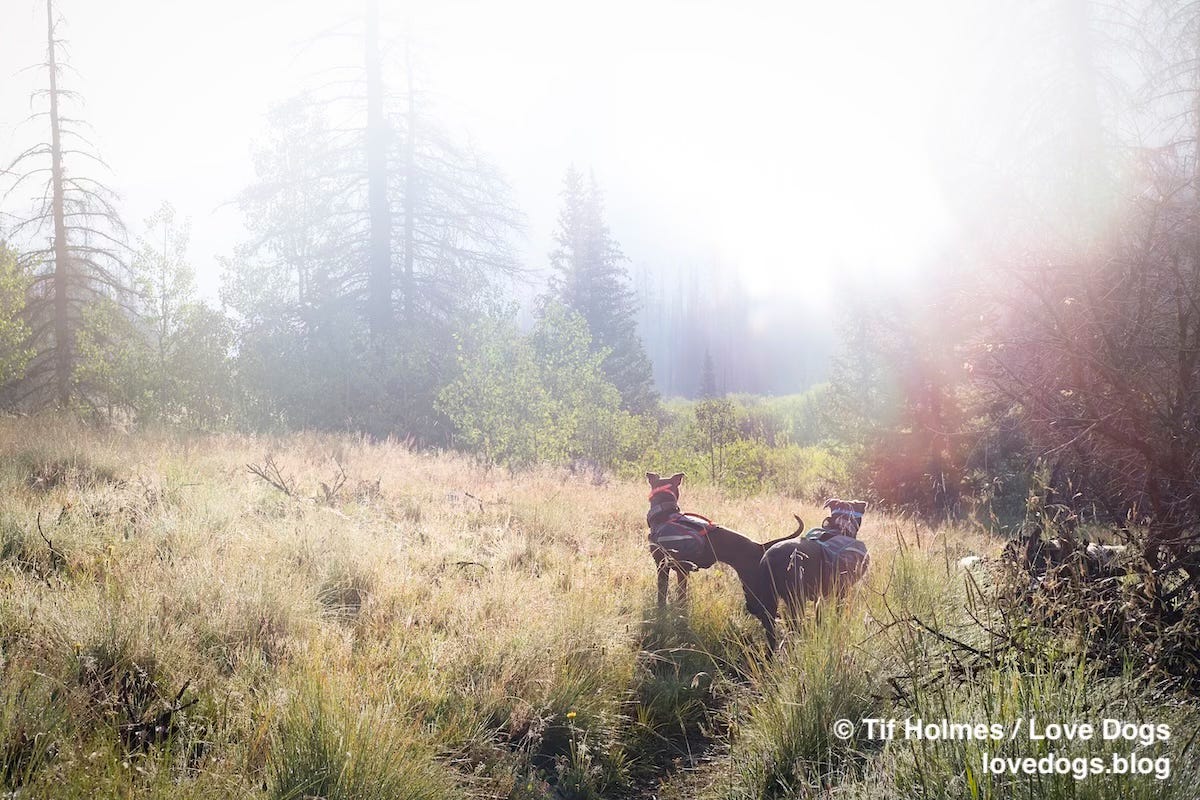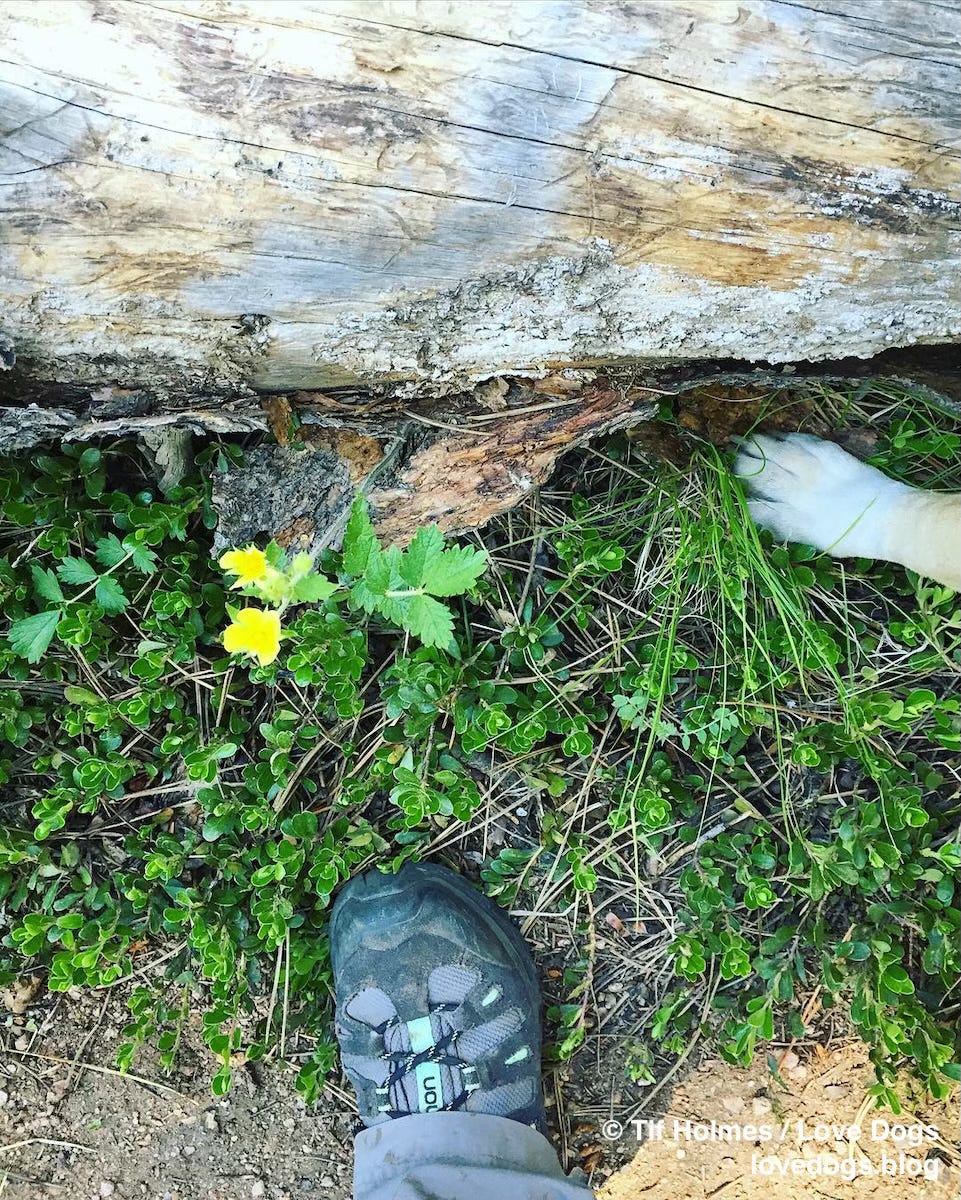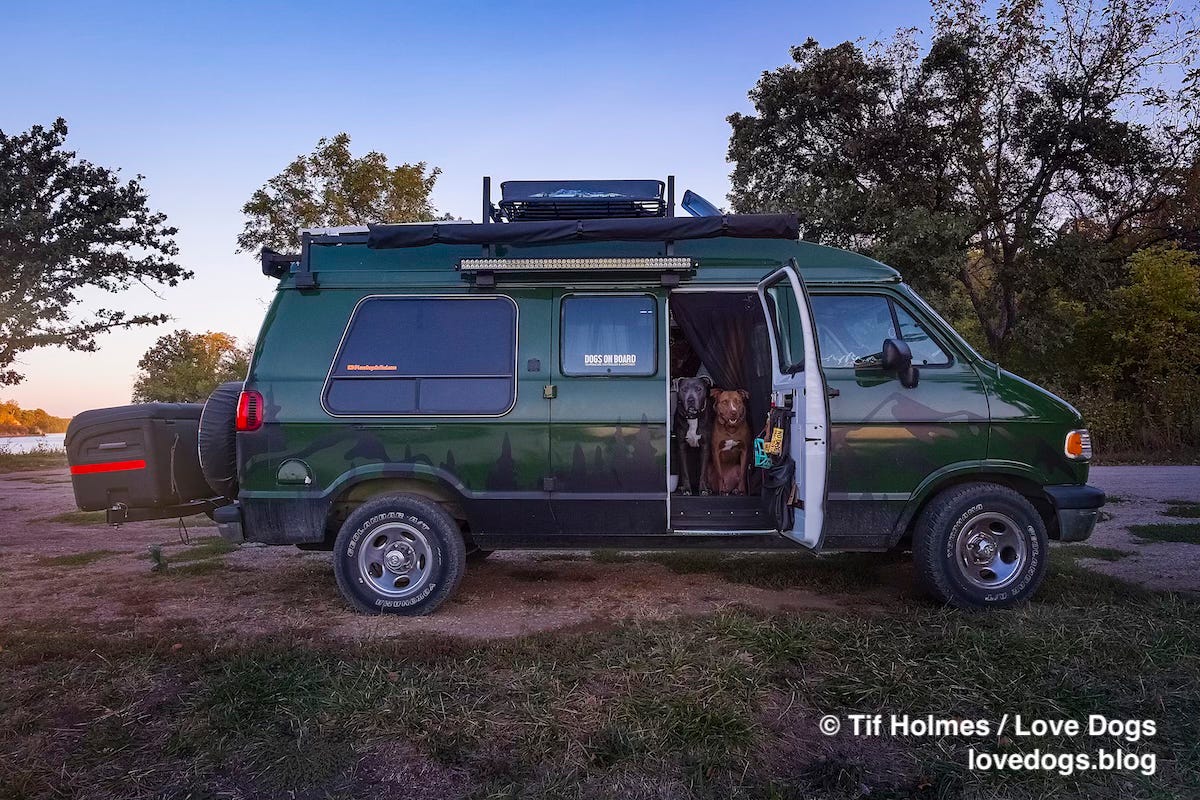I don’t recall if I ever really explained on this blog why I wanted to pursue “van life” with two big dogs. There are multiple reasons, honestly, but probably the most important one is, in fact, my dogs.
We lived in a back house apartment in a bustling area close to a university campus in a town of about 260,000. Lots of people walked in the area, and many with dogs. It was a beautiful thing until during the pandemic more people started consistently walking their dogs around the neighborhood off-leash. One in particular would throw a ball down the road ahead of them and let their dog go after it and bring it back as they walked. Another would let their dog walk 30-50 feet ahead of them. And I get it. I really do. I’m one who lets my own two dogs off-leash the second I know we’re in a safe place to do so (but not until then).
With Japhy’s reactivity, it became too stressful to walk around our own neighborhood. Perhaps those off-leash dogs were well-trained, but I had no way of knowing for sure that they wouldn’t suddenly run over to us if they saw us walking nearby, and I just couldn’t take that chance. Additionally, we had been charged and cornered multiple times by random loose dogs, which was terrifying. So we stopped walking in our neighborhood, and I started driving thirty minutes outside of town everyday to let Japhy & Hazel run off-leash on the dirt roads that border plots of cotton and sorghum. Soon, and for more reasons than this, of course, the cons of staying in that little back house apartment outweighed the pros.
If you know me, you know that van dwelling just “fits” my personality, my work, my play, and generally the way I live and enjoy life. I spent the first twenty-two years or so of my life outside in a very rural place, surrounded by miles and miles of hardwood forest to explore. I’m very introverted, and I mostly prefer places where the more-than-human outnumber the human. I feel the most alive and whole in wilderness areas and on the road in between such places.
It turns out that those are the same places my dogs really come to life as well. Backpacking, which I’ve done with my [multiple] dogs for at least the last eighteen years, was a way for me to simultaneously get out of the city and back into the remote wilderness areas I love and enhance my relationships with my dogs. Those are the places where my dogs and I truly become a team and build unbreakable bonds.
That said, it wasn’t obvious to me just how effective it was until the five years I had with Mani. She was the most independent dog I’ve ever had. And while I understand that some trainers generally don’t advise applying the word “stubborn” to dogs, friends, my Mani was as stubborn as I was. It was like living with a tiny, furry, four-legged version of myself (with sharp teeth). 😂 We struggled, until we started backpacking The Colorado Trail together every weekend, and then things started to click. She was happy. I was happy. We learned to listen to and trust each other. That was a time of immense revelation for me, as a person and dog trainer.
Now, a lot of this comes down to simply allowing dogs to be who/what they were bred for. We’ve largely become a sedentary society but are still adopting dogs who were bred for outdoor work—herding, hunting, guarding, sporting, working—and then we wonder why we have behavioral issues when we don’t provide them with the physical and mental stimulation they need in order to “succeed.” If they were human, perhaps they would tell us that they need something else in order to feel whole. :)
When I found myself in a situation to buy a van in early 2024, I jumped on it. Things kept falling into place, and I kept following the “magic” until I had a van sitting in my driveway. I did not stop to think. I’d let chances slip through my fingers enough times before that I was absolutely determined to get out of my own way this time. Plus, I’d already been thinking about it for years. What more was there to think about? The risks were always going to be there, but the potential gains… I had to act this time or the potential gains might be lost forever.
The dogs and I have been in the van now for 384 days, and I’ve noticed a few things during this time. Japhy’s reactivity still exists (van life was not a cure); however, he is reacting less / has far fewer triggers. Additionally, his recovery time—or the time it takes for him to self-regulate—is much shorter. Honestly, the fact that he self-regulates at all is huge. I see him looking to me for guidance more often now. Checking in. He’s always been a bit of a “mama’s boy,” but he now actually trusts me to handle situations instead of thinking he needs to handle them himself. Is he still protective? You bet he is. And I wouldn’t have it any other way, especially as a solo female living and traveling in a van. But there is a much clearer line developing between “reactive” and “protective.” He’s still not a dog who likes strangers who pay too much attention to him (he’d rather quietly check you out before a direct confrontation). He’s still not a dog who likes other dogs. But these things are becoming less of a defining element in our lives together, because we’re filling our lives with more important—positive—types of encounters. In the van, there’s something new to experience every single day, and I truly believe this has helped lessen Japhy’s reactivity. On some level, it’s a form of socialization (something Japhy didn’t get, being diagnosed with distemper early in our time together, and then the pandemic sending us back into quarantine again shortly after). But on a deeper level, it’s an exercise in trust, just like backpacking.
Put another way:
When training loose-leash walking, it’s sometimes suggested that you incorporate into your training the act of suddenly and randomly changing the direction you’re walking. The anticipated outcome is that, if done enough, a dog will learn to slow down and watch you for guidance instead of letting excitement take over and pulling you all over the place. Incidentally, those watching you from afar might think you’re a little crazy. 🤪
Living in a van is similar (right down to people from afar thinking you’re crazy). It’s full of directional changes and surprises. As a result, Japhy has learned to slow down and watch me for guidance more often, instead of always letting his excitement (and fear) take over (manifesting in reactivity).
Ultimately, though, what has led to this behavior change, I think, is the fact that over and over again and in a wide variety of situations and environments, Japhy has come to realize that nothing bad has happened to him/us. Every time something new and exciting is encountered, even if it’s breaking down alongside an interstate and having to be picked up by a stranger and taken to a hotel, then moving to a different hotel, then to an RV rental, staying with different friends during art shows, going backpacking, hiking, taking a walk with new human friends, parking in random Cracker Barrels or in a friend’s driveway or at grandma and grandpa’s house, whatever the situation might be… we’re together and we’re safe.
In the end, that’s all that really matters for any of us.
As a reminder: I’m turning off paid subscriptions here on Substack. If you received an email saying you’ve been unsubscribed as a paid member, that’s why. I apologize for any inconvenience, and I do appreciate the support (very much!). Unfortunately, Substack is not yet a particularly supportive platform when it comes to small-beans writers like myself and sales tax liability for national and especially international paid subscription income. If you would like to continue your paid support of the Love Dogs, please consider joining our Patreon community at whatever level you desire (you can create your own tier!). Patreon takes care of the sales tax and VAT for me, which means I can write more and stress less about my tax obligations. Again, thank you so much for your support! It means a lot. If you have questions about Patreon, don’t hesitate to reach out. I’m happy to help.







